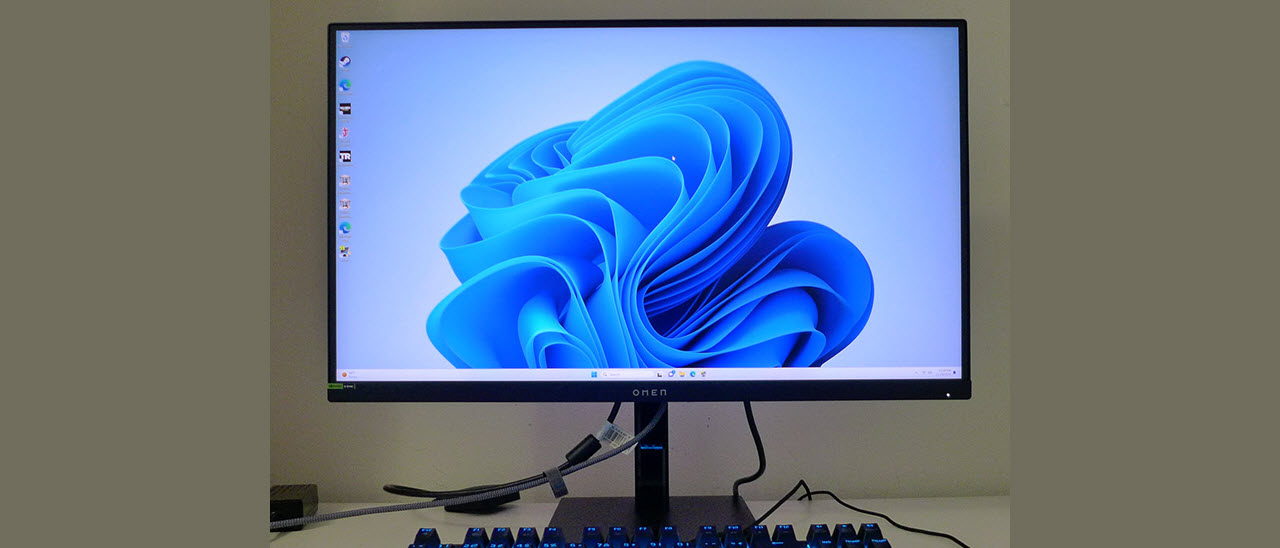Why you can trust Tom's Hardware
HP has taken the correct approach with the Omen 27k’s color management by defaulting to sRGB for SDR and DCI-P3 for HDR. That is if you stick with the default Standard picture mode. For users wanting the wide gamut for SDR, that option is available in the Native mode with a caveat.
Grayscale and Gamma Tracking
Our grayscale and gamma tests use Calman calibration software from Portrait Displays. We describe our grayscale and gamma tests in detail here.
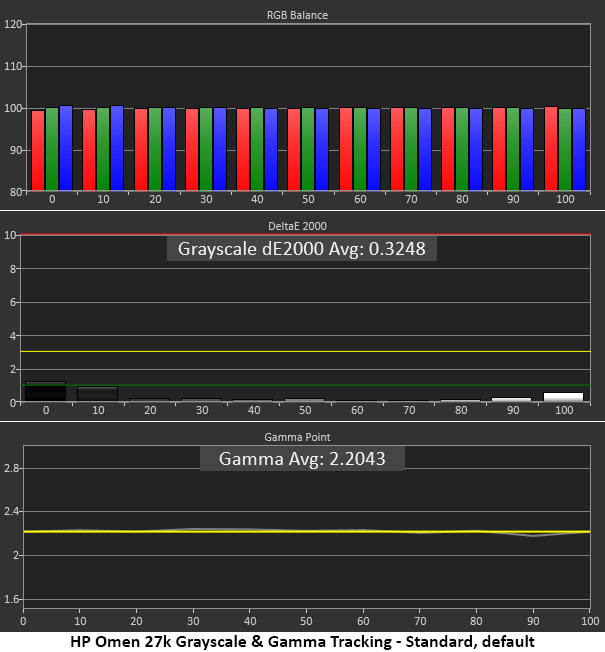
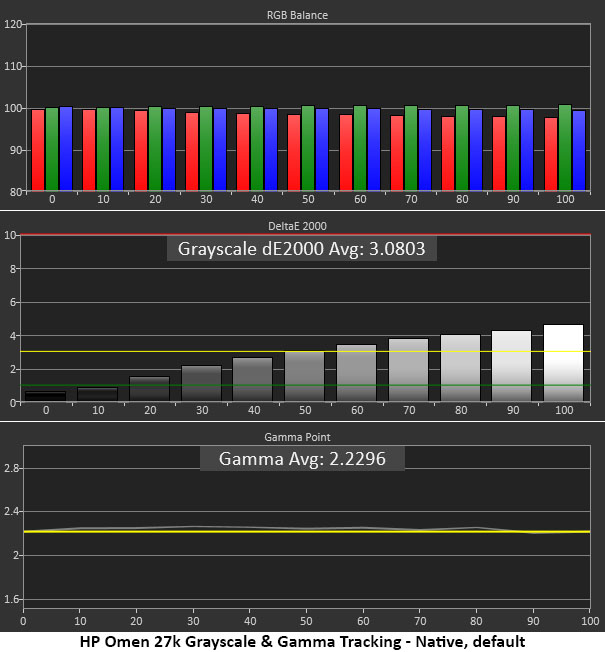
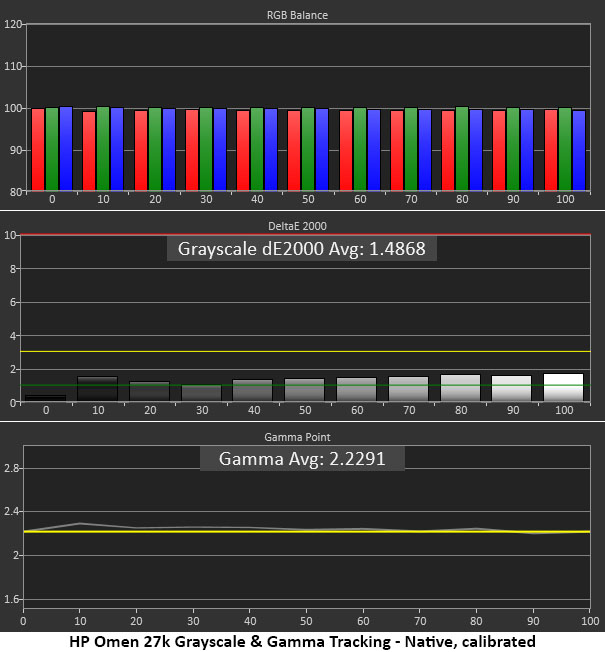
Default grayscale charts don’t get better than this. The Omen 27k’s opening measurement run is truly impressive and will embarrass most professional screens, which cost five times as much. Grayscale tracking – perfect. Gamma – perfect. This is the default Standard picture mode, which means sRGB color.
If you want the Omen 27k’s full native gamut, Native mode delivers that. But grayscale then becomes a tad green. No biggie since you can adjust the RGB sliders for each picture mode. A few tweaks fix any visible issues. Gamma remains straight and true. This is an exceptional performance overall.
Comparisons
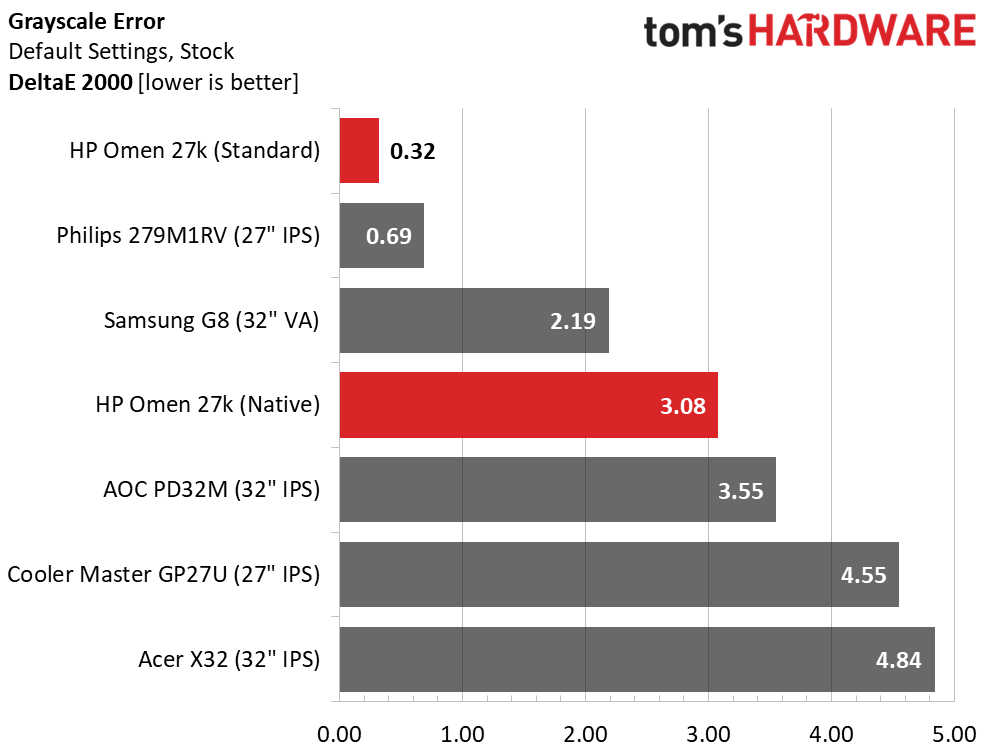
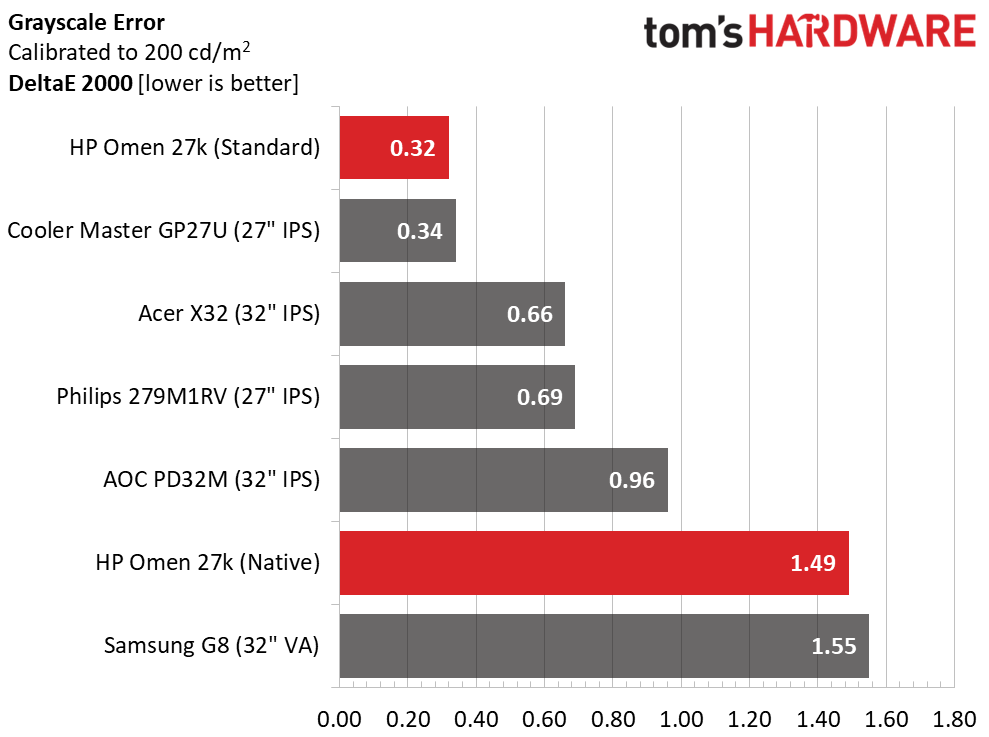


There was no need or benefit to calibrating the Omen 27k’s Standard mode, so I used the 0.32dE result for before and after states. Native starts at 3.08dE with a visible green tint so it should be adjusted. The result is 1.49dE, which is well below the visible threshold, as are all the screens here. There isn’t a bad one in the bunch.
The Omen 27k has reference-level gamma tracking if you don’t want something other than 2.2. I don’t have an issue with this, but it would be nice to choose darker or lighter settings. With tracking this good though, it won’t be an issue for most users.
Color Gamut Accuracy
Our color gamut and volume testing use Portrait Displays’ Calman software. For details on our color gamut testing and volume calculations, click here.
Get Tom's Hardware's best news and in-depth reviews, straight to your inbox.

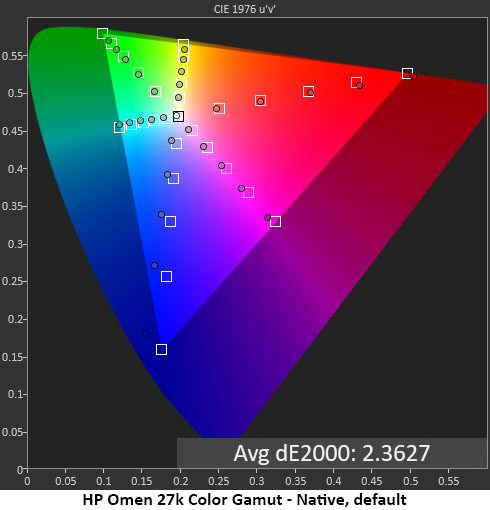
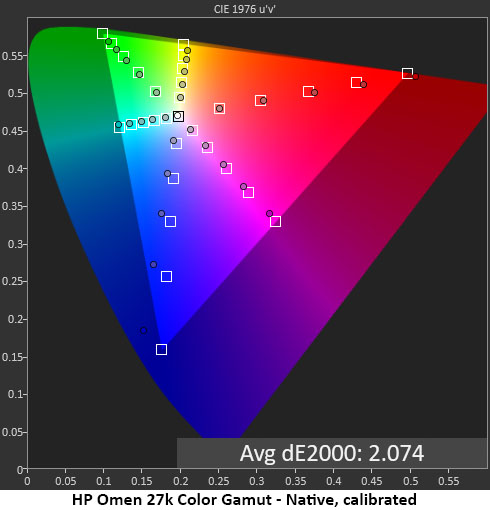
The Omen 27k’s color gamut accuracy is equally impressive. The only anomaly here is the 100% blue point, which is under-saturated and off hue. It’ll be hard to spot this issue in actual content, but given the perfect performance otherwise seen here, its presence is a mystery.
In the Native mode, blue is again a little off-kilter with hues that are awry of their targets. Magenta is also a tad undersaturated. Remember that this is now a DCI-P3 reference. If you use this gamut for SDR, it’ll look very colorful and none of the measured issues will be noticed. I point them out here because nitpicking is what I do.
Calibration only makes a small difference in the already solid gamut test result. Again, this is what you can expect when using the extended color Native mode for SDR content. It will be very colorful, and you will be satisfied.
Comparisons
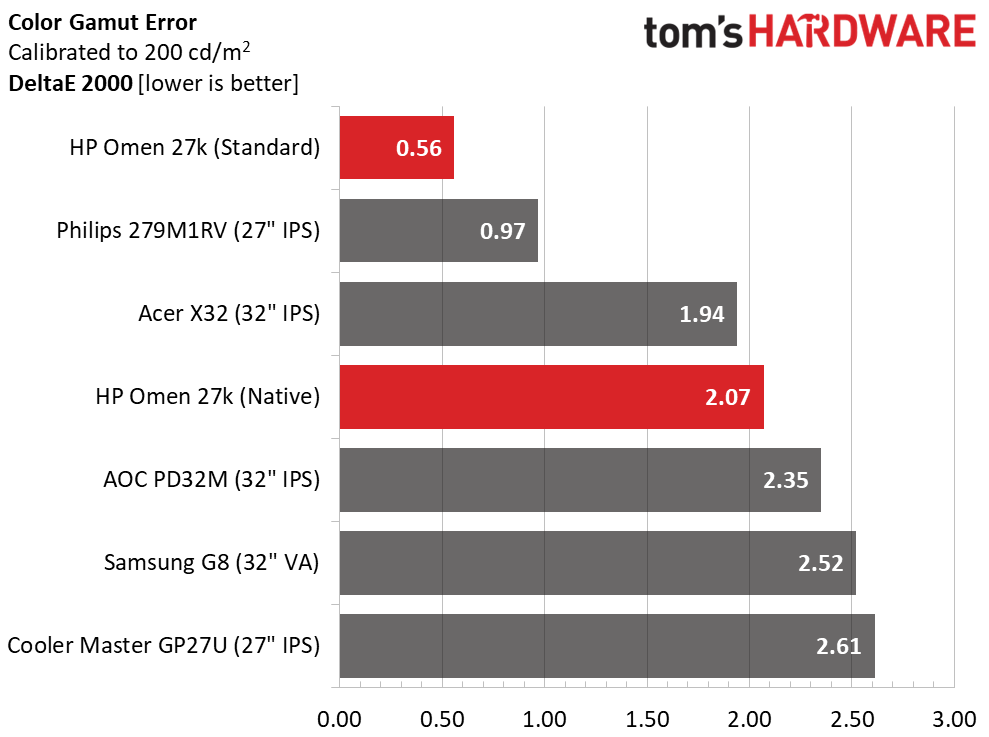
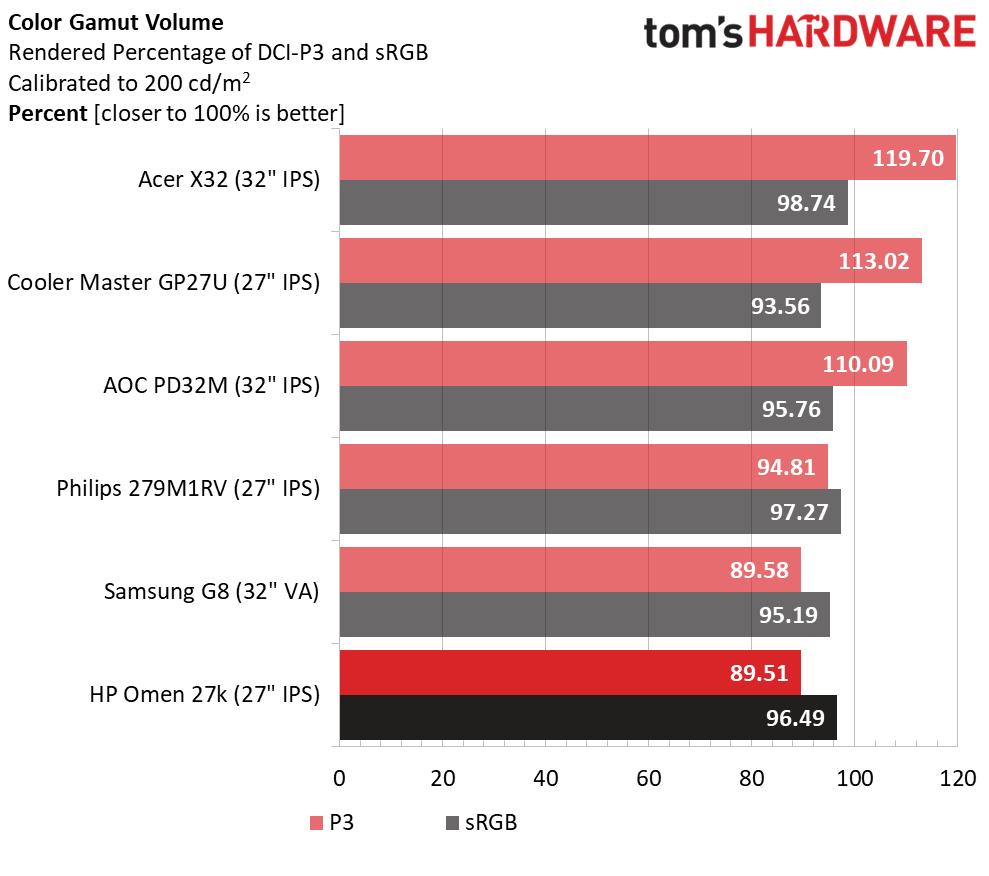
Again, with the pro-level test results! The Omen 27k is acing my color benchmarks in Standard mode. 0.56dE is one of the best scores I’ve ever recorded for any monitor. The Native wide-gamut result is a tad better than average and well beyond any visual issues. The blue errors I noted above are hard to spot in actual content. This is excellent performance.
Test Takeaway: If you use the Omen 27k in its out-of-box Standard mode, you’ll see sRGB perfection with no errors in grayscale or gamma. Aside from a slight blue issue, which is nearly impossible to spot, it delivers pro-level accuracy. For users wanting wide gamut color for all content, it needs calibration with a few tweaks required to remove a green tint. Gamma in all cases is perfect. This kind of accuracy usually costs a lot more money. Whatever the color choice, you will enjoy the Omen 27k’s image.
MORE: Best Gaming Monitors
MORE: How We Test PC Monitors
MORE: How to Buy a PC Monitor
MORE: How to Choose the Best HDR Monitor
Current page: Grayscale, Gamma and Color
Prev Page Brightness and Contrast Next Page HDR Performance
Christian Eberle is a Contributing Editor for Tom's Hardware US. He's a veteran reviewer of A/V equipment, specializing in monitors. Christian began his obsession with tech when he built his first PC in 1991, a 286 running DOS 3.0 at a blazing 12MHz. In 2006, he undertook training from the Imaging Science Foundation in video calibration and testing and thus started a passion for precise imaging that persists to this day. He is also a professional musician with a degree from the New England Conservatory as a classical bassoonist which he used to good effect as a performer with the West Point Army Band from 1987 to 2013. He enjoys watching movies and listening to high-end audio in his custom-built home theater and can be seen riding trails near his home on a race-ready ICE VTX recumbent trike. Christian enjoys the endless summer in Florida where he lives with his wife and Chihuahua and plays with orchestras around the state.
